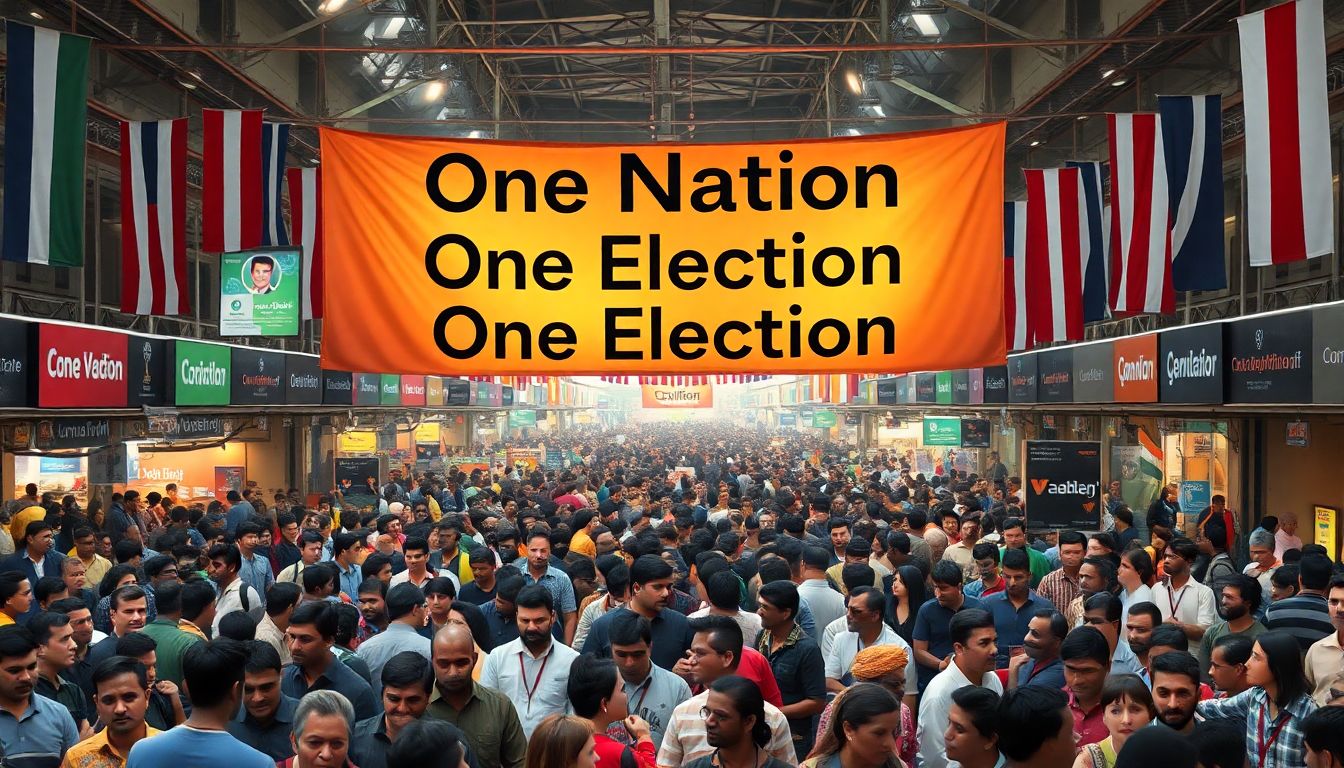
Introduction
India’s electoral process is one of the largest and most complex in the world. However, this system faces several challenges, from extended timelines to high costs. The concept of "One Nation, One Election" aims to simplify the process by holding simultaneous elections for the Lok Sabha and State Assemblies. This idea has the potential to revolutionize the electoral system, making it more efficient, cost-effective, and unified.
The Current State of Indian Elections
The Complexity of Multi-Phased Elections
India’s elections often span weeks or even months. With different states voting at different times, the staggered approach can be confusing for voters and resource-intensive for authorities.
Logistical Challenges and Costs
Staggered elections demand extensive resources, from security personnel to election officials. The financial burden on both state and national budgets is immense, making the process increasingly unsustainable.
The Case for Reform: Efficiency and Unity
The "One Nation, One Election" proposal suggests holding elections simultaneously across the country. This approach could:
- Save Time and Resources: Reducing the frequency of elections allows for more focused governance.
- Promote National Unity: A unified electoral process fosters a sense of shared purpose and collective participation.
Economic Benefits of One Nation, One Election
Reduced Campaign Costs
Political campaigns are expensive. With fewer election cycles, parties and candidates can significantly cut down on advertising, rallies, and logistics costs.
Minimized Disruption to Productivity
Frequent elections often disrupt daily life and business operations. Synchronizing elections could reduce these interruptions, leading to better economic productivity.
Long-Term Economic Growth
Efficient elections could encourage investments and enhance political stability, creating an environment conducive to economic growth.
Logistical and Administrative Feasibility
Synchronizing Election Schedules
Aligning state and national election timelines would require careful planning. Some state assemblies may need to shorten or extend their terms temporarily to enable synchronization.
Delimitation of Constituencies
Revisiting constituency boundaries and ensuring uniformity in representation are crucial steps for effective implementation.
Addressing Legal Challenges
Constitutional amendments and legal frameworks would be necessary to facilitate this change. Ensuring that these reforms are legally sound will be a critical aspect of the transition.
Political Ramifications and Potential Impacts
Impact on Political Parties
- Ruling Parties: Established parties may benefit from their continuous visibility and governance record.
- Opposition Parties: Smaller or regional parties might face challenges in mobilizing resources and strategizing for simultaneous elections.
Potential Changes in Voter Behavior
Unified elections could either:
- Increase voter turnout due to the consolidated voting process.
- Lead to voter fatigue if citizens feel overwhelmed by simultaneous choices.
Shift in Power Dynamics
Simultaneous elections could alter the balance of power between regional and national parties, potentially increasing the focus on national issues.
Public Opinion and Societal Implications
Understanding Public Sentiment
Surveys and polls are essential for gauging how the public perceives this reform. Early feedback can guide decision-making and highlight areas of concern.
Role of Media in Shaping Discourse
Media coverage will play a significant role in educating the public and framing the debate around "One Nation, One Election". Transparent and balanced reporting is vital to fostering informed discussions.
Social Cohesion
A unified electoral process could strengthen national identity by bringing people together for a shared democratic experience. However, care must be taken to ensure that no community feels excluded or marginalized.
Actionable Steps for Implementation
1. Establishing a Task Force
A dedicated task force or committee should oversee the planning and execution of this reform. This body would address logistics, legal challenges, and public communication.
2. Encouraging Public Dialogue
Hosting town halls, debates, and consultations can engage citizens and build consensus. Public participation is key to ensuring the reform is widely accepted.
3. Creating a Roadmap
A detailed implementation plan with clear timelines, milestones, and evaluation criteria is essential. The roadmap should outline:
- Steps for aligning election schedules.
- Measures to address legal and logistical hurdles.
Challenges and Criticisms
1. Constitutional Amendments
Significant legal changes would be required, including amendments to the Constitution, which may face opposition.
2. Political Resistance
Regional parties might resist the proposal, fearing a loss of influence in a nationally synchronized election.
3. Logistical Overhaul
Conducting simultaneous elections in a country as large and diverse as India poses enormous logistical challenges, from managing voting booths to ensuring security.
Conclusion: A Unified Vision for Electoral Reform
Key Takeaways
The "One Nation, One Election" proposal offers a vision of streamlined, cost-effective, and unified electoral processes. Its potential benefits include reduced costs, greater national cohesion, and enhanced political stability.
Addressing Challenges
While promising, the reform faces hurdles such as legal complexities, logistical demands, and political opposition. Overcoming these challenges will require collaboration and careful planning.
The Path Forward
By prioritizing transparency, public engagement, and meticulous execution, India can move closer to adopting a more efficient electoral system. The success of this initiative lies in its ability to balance national unity with the diverse needs of its citizens.
What do you think about the idea of "One Nation, One Election"? Share your thoughts and join the discussion on the future of India's electoral system.
.jpg)